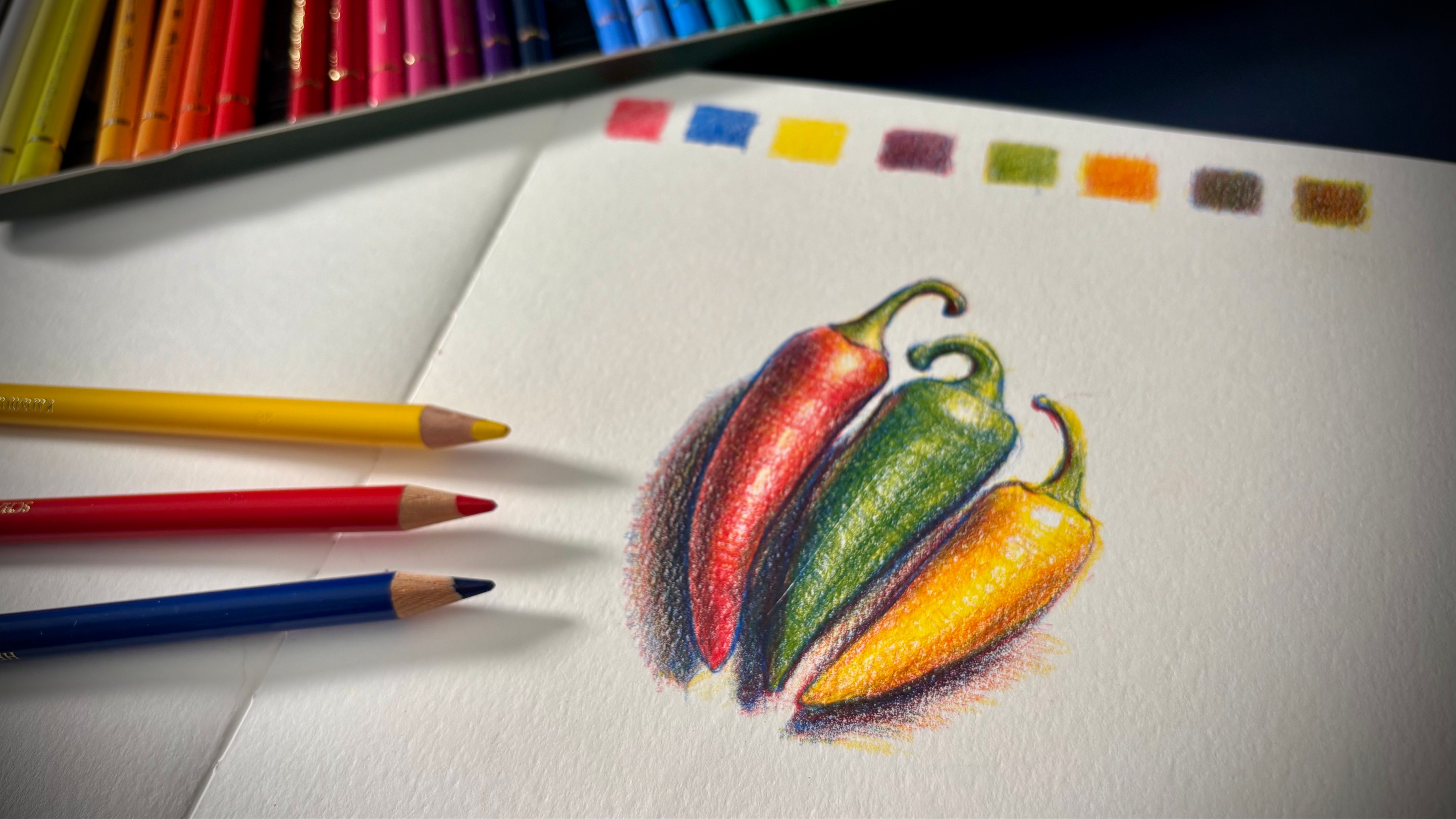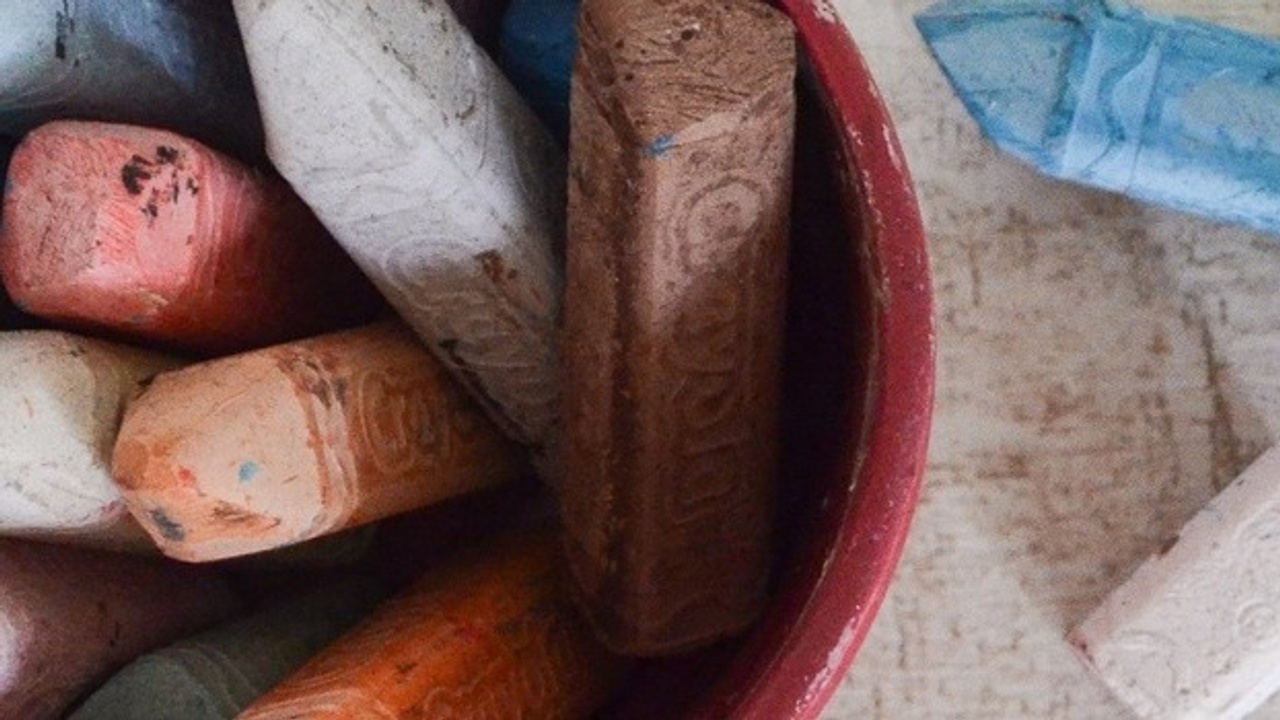
A Guide To Buying Pastels
May 05, 2022This guide covers the different types of pastels available and which ones you might want to consider starting with. I’m assuming you’re either a newcomer or early on in your pastel painting adventure and my aim is to save you from lots of tedious research and wasted money on equipment you don’t need.
It's not a review of every single pastel brand - that would take you hours to digest!
Instead, it's a brief resume of the pros and cons of the different types of pastels. At the end, I'll give you some definite recommendations for a set of tools with which you can hit the ground running!
Let's look at what type of pastels are available...
Types of Pastel
There are essentially four types of pastels:
- Soft Pastels
- Hard Pastels
- Pastel Pencils
- Oil Pastels
Professional and experienced pastel painters will often use soft pastels, hard pastels and pastel pencils in the same piece.
By the way, you need to be aware that the make-up of oil pastels means they behave very differently to the other three types and are considered a completely separate medium. Do look out though for another article on using this lovely medium.
So let’s take a look at soft and hard pastels and pastel pencils, along with their various pros and cons and whether you need all three to start.
1. Soft Pastels
Pastels are made by combining pigment with a mineral filler and binder, which holds that pigment together in a useable form.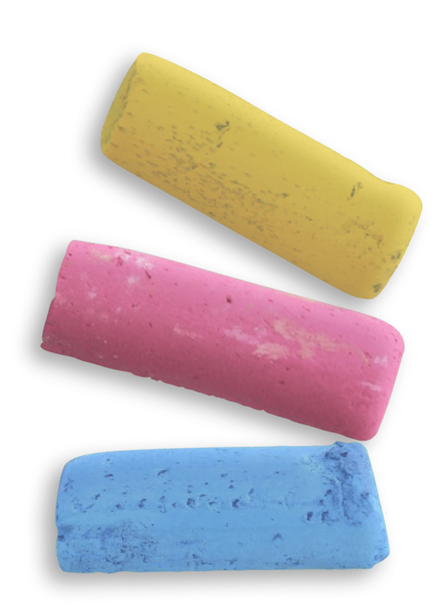
Soft pastels contain more pigment and less binder compared to hard pastels and pastel pencils. As a result, the colours are very vibrant and intense and it’s this quality that draws so many artists to use them.
Because of their soft nature, it’s extremely easy to apply lots of colour quite quickly to the paper. Being so intense and opaque, the colours will also cover even the darkest toned papers without looking dull.
Soft pastels are the easiest to blend, the easiest to layer colours on top of one another and will cover larger areas the most quickly.
The downside is that they are expensive and they can create quite a bit of dust.
Student Quality Vs Artist Quality
Soft pastels are available in artist quality and student quality. And just like oil, acrylic and watercolour paint, artist quality pastels have more pigment (and often a higher-quality pigment) and less binder compared to student quality ranges.

Photo credit: [artsupplies.co.uk]
They are also more resilient to fading with light exposure over time. While there is a noticeable difference in the intensity of their colour, how smoothly they cover the surface and how well they blend, artist quality soft pastels can be very expensive.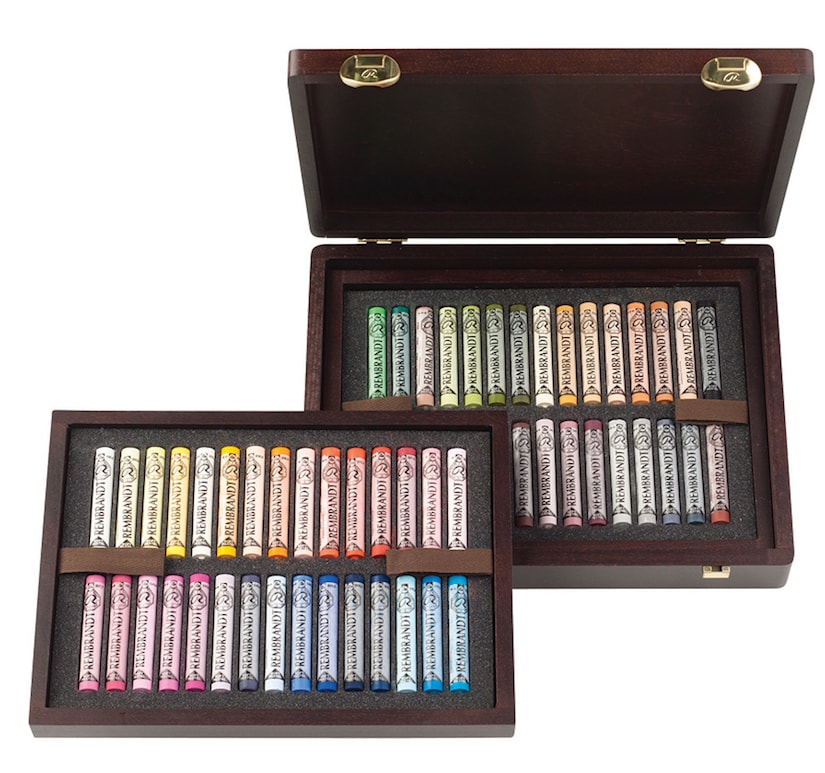
Photo credit: [artsupplies.co.uk]
If you’re a newcomer to drawing and painting, without question start with a student-quality set. If you’re a more experienced artist wanting to try pastel painting also go for student quality unless the budget isn’t an issue.
There are some very good student sets (see brands below) that will last you a long time. Even if you upgrade to artist quality, later on, you can still use your student set for large background areas, quicker sketches and in place of hard pastels (see the next section).
Brands to Look Out For
Artist Quality
I’m a big fan of Sennelier and Unison. Both are incredible!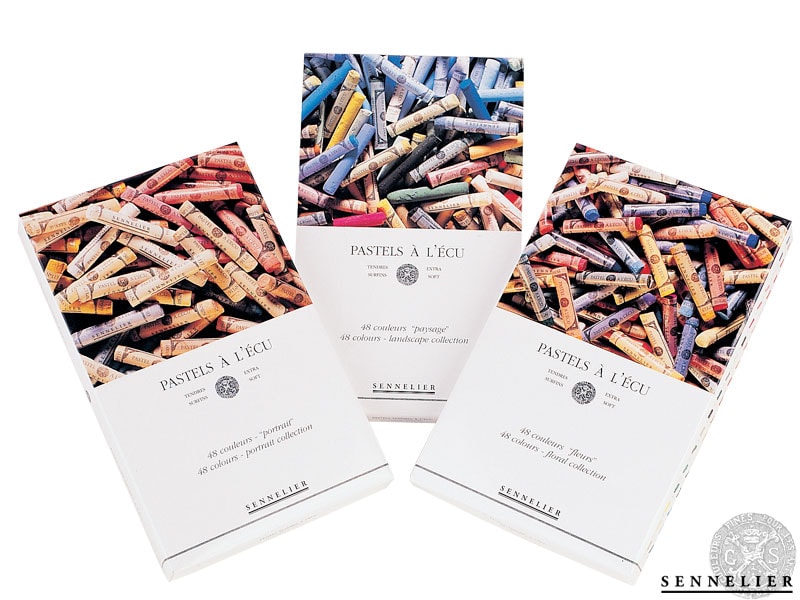
Photo credit: [artsupplies.co.uk]
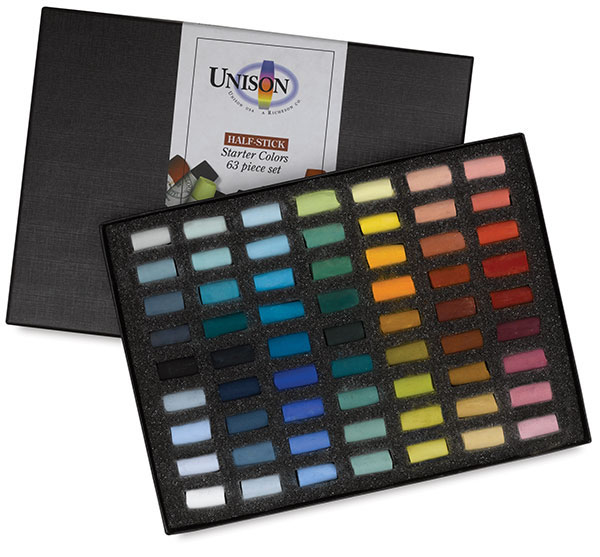
Photo credit: [dickblick.com]
I haven’t tried the others on this list, but they are all highly regarded amongst serious pastel artists:
- Schmincke soft pastels
- Rembrandt soft pastels
- Conté à Paris soft pastels
- Art Spectrum soft pastels
To give you some idea of price:
A set of 40 Sennelier half sticks (more on half vs full sticks below) costs around $60 USD or £45 GBP.
A set of 60 Rembrandt half sticks comes in at around $75 USD or £40 GBP.
A set of 40 Art Spectrum half sticks costs around $90 USD or £65 GBP.
Student Quality
The following three brands all offer excellent value for money and are highly rated:
- Faber-Castell Creative Studio
- Prismacolor NuPastel (these are a harder pastel - see the next section)
- Inscribe / Mungyo
I have sets by Faber-Castell and Inscribe and both make great starter sets. In North America, Prismacolor is highly rated for the price too.
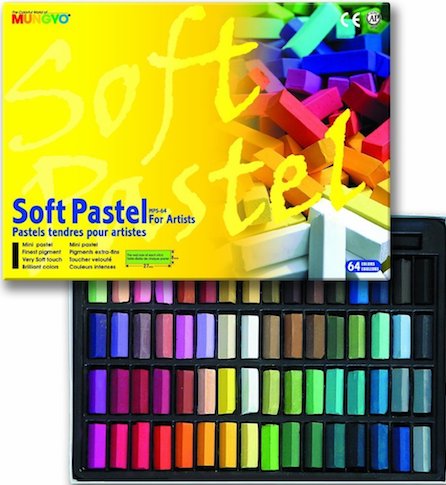
Photo credit: [amazon.co.uk]
A set of 72 Faber-Castell Creative Studio costs around $40 USD or £25 GBP. The smaller 48 sets come in at about $18 USD or £15 GBP.
A set of 48 Prismacolor NuPastel can be had for around $35 USD. They’re not very affordable in the UK though.
If you’re on a tight budget, go for a set of Inscribe or Mungyo. A set of 64 is currently on offer for under $10 USD / £10 GBP. They are the least vibrant and hardest to blend of all the brands listed, but certainly, a very affordable way to test the waters.
Sets vs Individual Colours
If you’re opting for student quality, you’ll be buying a set. The only decision comes down to set size and what you can afford. Try to get at least 48 to cater for a range of subject matter.
If and when you upgrade to artist quality, it’s still more affordable to start with a set and then replace or acquire individual colours as you need to.
Most pastel manufacturers will also offer sets based on subject matter. i.e. a landscape set or a portraits set.
This simply means that the sets will contain a bias of colours towards say, landscape greens, blues & greys, or a range of skin tones for portraiture, etc.
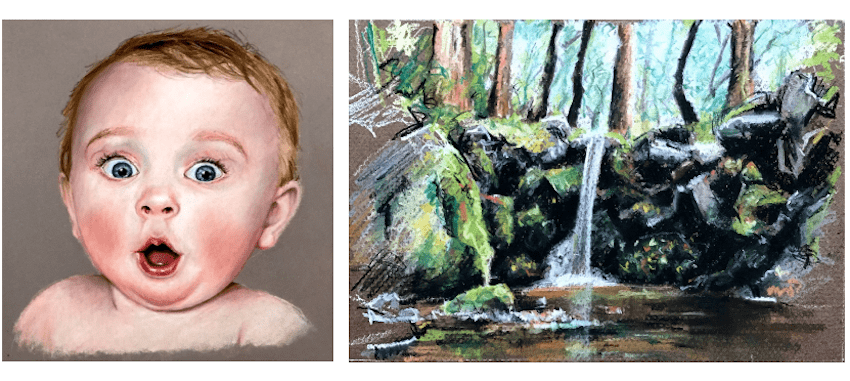
If you tend to focus on one subject more than anything else, it’s a good idea to go with one of these subject-specific sets.
There’s absolutely no reason why you can’t mix and match artist and student quality pastels as you’re progressing. A good progression might look something like this:
Start with a student quality set.
Purchase a small artist quality mixed set of general colours and use alongside the student quality set to see how you like them.
Add additional individual artist quality colours when you can, or go for a subject-specific set if you find yourself making lots of landscapes or portraits, or animals, for example.
2. Hard Pastels
Hard pastels contain more binder than soft pastels. On the one hand, they won’t produce the same vibrant, opaque coverage that soft pastels do, nor will they smudge, blend or layer as well.
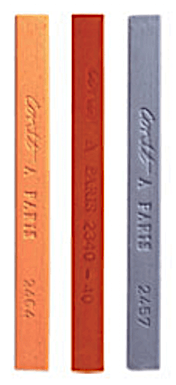
However, their firmer consistency makes them ideal for crisp edges and fine detail. It’s very difficult to create any kind of sharp detail with a soft pastel (not least because of their shape) so most artists will use a combination of soft and hard pastels for each painting.
There’s absolutely no reason why you can’t create entire works of art using just hard pastels. You won’t get the same loose and expressive energy but you will be able to create the hard edges and detail that even loose paintings require.
Student Quality vs Artist Quality
It’s not always obvious whether a brand or range of hard pastels falls into the artist or student quality bracket. The most highly-regarded hard pastels are probably Carrés crayons by Conté à Paris.
At the other end of the spectrum, you’ll find cheap chalk-based pastels which I don’t recommend, even with their low price tag.
Brands to Look Out For
- Carré's crayons by Conté à Paris
- Polychromos Pastels by Faber-Castell (confusingly the same name as their coloured pencils)
- NuPastel by Prismacolor
- Carré pastels by Cretacolor
- Signature hard pastels by Jack Richeson
- Gioconda pastels by Koh-I-Noor
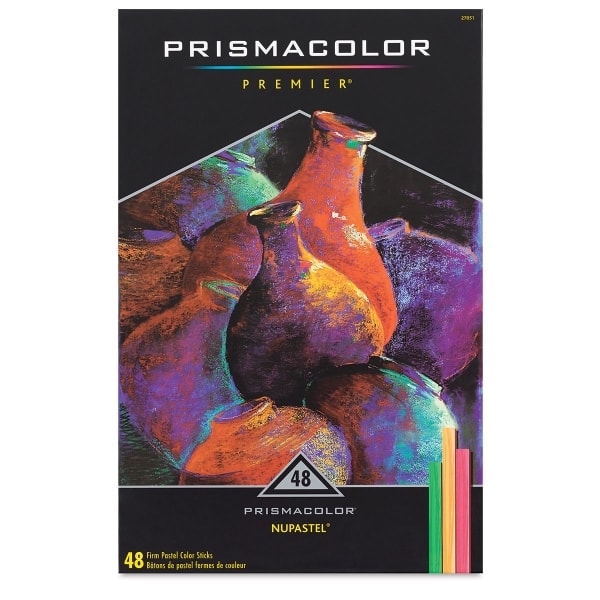
Photo credit: [dickblick.com]
For an idea of price, a set of 48 Carrés crayons by Conté à Paris costs around $70 USD or £40 GBP.
A set of 48 NuPastel by Prismacolor costs around $50 USD but are very expensive in the UK.
A set of 48 Gioconda hard pastels by Koh-I-Noor comes in at around £25 GBP but are much more expensive in North America. If you’re in North America, go for Prismacolor NuPastel. In Europe, Carré's crayons might be within your budget but if not, go for the Gioconda.
With that said, read the next section on pastel pencils before you rush out and buy anything!
3. Pastel Pencils
Pastel pencils are a wonderful drawing and painting tool in their own right. In fact, I believe they are the easiest coloured medium to work with and they are ideal for newcomers.
They’re not as soft as soft pastels, as you’d expect, but they are noticeably softer than hard pastels. This means they tend to blend and layer more easily.

Photo credit: [arttutor.com]
Despite being softer, they actually offer you more precision and control than hard pastels, with the familiarity of a pencil. And because the pastel in encased in wood, they are by far the least messy form of pastel painting.
If you want to dip your toe into pastel waters (and you should!) you could just go for a set of pastel pencils, to begin with. I’d much prefer you do that, learn the fundamentals of layering and blending etc., and then add a set of soft pastels to your toolbox.
Student Quality Vs Artist Quality
The same applies here as it does for hard pastels - there are different priced options with the most expensive being artist quality. Of the three types of pastels, my advice is to be the pickiest over pastel pencils.
There are only a few brands I recommend you consider (even as a newcomer) and they are classed as artist quality.
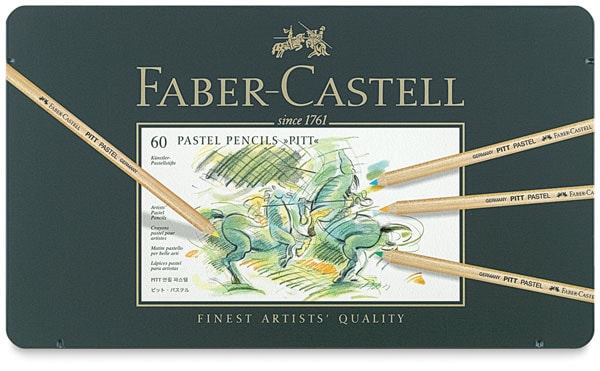
Photo credit: [dickblick.com]
Brands to Look Out For
- Faber-Castell Pitt pastel pencils (my personal favourite)
- Caran d’Ache pastel pencils
- Derwent pastels pencils
- Stabilo Carbothello pastel pencils
- Koh-I-Noor artist soft pastel pencils
Unsurprisingly, Caran d’Ache pencils require you to remortgage your home, costing about $120 USD or £100 GBP for a set of 40.
A set of 36 Faber-Castell will cost around $55 USD or £45GBP.
Derwent’s set of 48 costs about $50 USD and about the £40 GBP price mark.
Koh-I-Noor set of 48 comes in at about $70 USD and about £40 GBP.
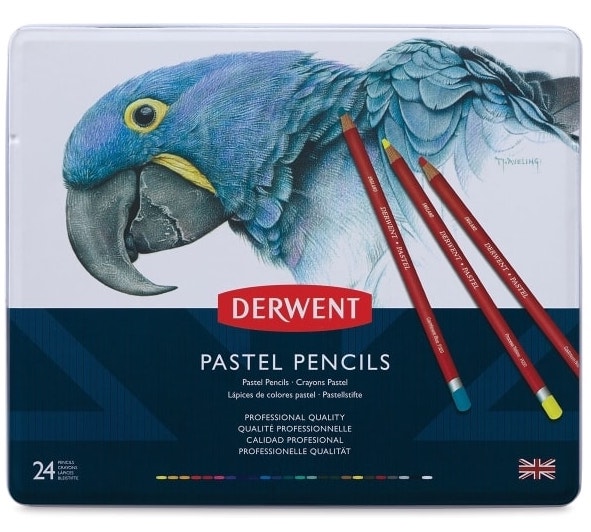
Photo credit: [dickblick.com]
Irrespective of price, Faber-Castell is my favourite and with all the ranges above in the same price category, it’s a no-brainer for me.
Recommended Pastel Mix
Serious and professional pastel artists will have a mix of soft, hard and pastel pencils and they’ll very often use a combination of all three on their paintings.
In my opinion, this is overkill for newcomers. Even if you’re lucky enough for affordability not to be an issue, this amount of materials just adds complexity and will lengthen the learning curve.
I am going to suggest that, at the outset anyway, you forget about a separate set of hard pastels. Either go with soft pastels and pastel pencils, or pastel pencils alone.
Here are some recommended mixes, which you can choose from, based on your preferences:-
Option 1 - Budget not a concern
A set of artist-quality soft pastels such as Sennelier, Schmincke or Rembrandt
A set of pastel pencils by Faber-Castell or Derwent
Option 2 - Budget-conscious but not too restricted
A set of higher-priced student pastels (i.e. Faber-Castell Creative Studio or Prismacolor NuPastel)
A set of pastel pencils by Faber-Castell or Derwent
Option 3 - On a budget, want the shortest learning curve
A set of pastel pencils by Faber-Castell or Derwent or hard pastels by Conté or Prismacolor (my recommendation is pastel pencils for the reasons given in the section above)
Option 4 - On a very tight budget
A set of Inscribe / Mungyo pastels (these are hard enough to give you some control and soft enough to experience some of the blending and layering qualities of pastels)
Suggested Manufacturers
Here are some of the suppliers/manufacturer's websites I've mentioned, where you can learn more about the products, or order online:
- Faber Castell
- Caran D'Ache
- Derwent
- Stabilo
- Koh I Noor
- Conté à Paris
- Prisma Color
- Mungyo
- Sennelier
- Schmincke
- Unison
- Art Spectrum
Never Miss a Blog Post!
I'll send you a short email whenever I publish a new blog post (which is most weeks)...
I will never send you spam or pass tyour email address to any third party

